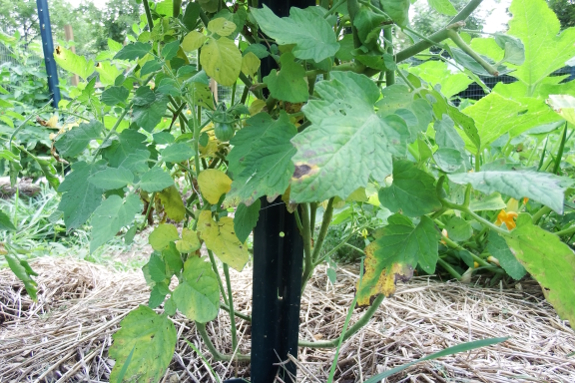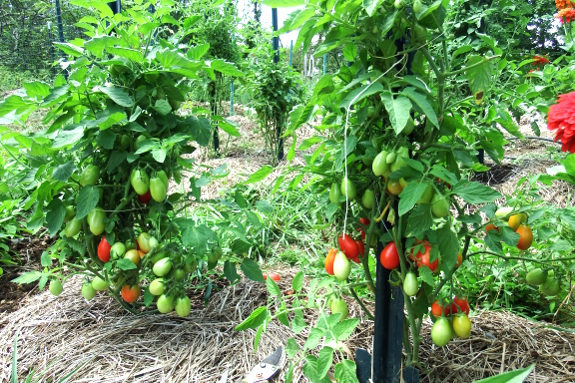
Tomato blight fake news

We had a rainy week here
in Ohio, and suddenly all of the gardeners started talking about tomato
blight. Unfortunately, I've seen a lot of misinformation floating
around in that department. So this post is my attempt to debunk a
couple of myths.
Myth
1: Blight came in with my compost. While it's possible that you
brought in tomato blight in one of your store-bought supplements, it's
most likely this fungal disease floated through the air from someone
else's garden to yours. Store-bought tomato plants can sometimes bring
blight along with them. But unless the compost you bought was created
from diseased tomato plants, it's unlikely a soil amendment is at fault.

Myth
2: I'll plant African marigolds and beat the blight that way. Tomato blight refers to one
of several different fungal diseases while African marigolds are used
to combat some species of nematodes. Tomatoes can (rarely) suffer from
nematodes, in which case you'll see enlarged knots on the roots,
yellowing leaves, and general slow growth. So, sure, plant a cover crop
of African marigolds in next year's tomato bed if you're certain you
suffer from nematodes. Otherwise, I instead recommend manual
blight-control techniques to deal with your ailing
plants.
I'm glad to report that
our tomatoes enjoy Ohio much more than they did Virginia. I've pruned a
couple of times to knock back septoria leaf spot, but our plants are
still thriving despite the onset of the mildest of the
trio of common tomato fungal diseases.
Want more in-depth information? Browse through our books.
Or explore more posts by date or by subject.
About us: Anna Hess and Mark Hamilton spent over a decade living self-sufficiently in the mountains of Virginia before moving north to start over from scratch in the foothills of Ohio. They've experimented with permaculture, no-till gardening, trailersteading, home-based microbusinesses and much more, writing about their adventures in both blogs and books.
Want to be notified when new comments are posted on this page? Click on the RSS button after you add a comment to subscribe to the comment feed, or simply check the box beside "email replies to me" while writing your comment.
- Remove comment
